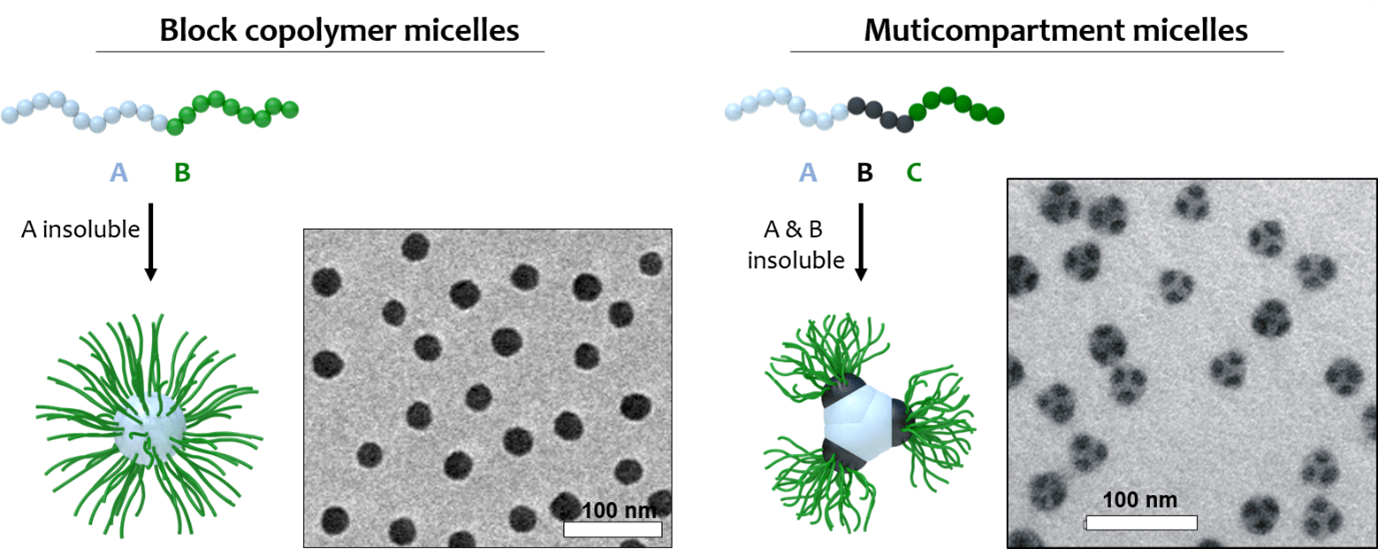Self-Assembly
Bulk Morphologies
Block copolymers form very defined nanostructures in bulk with precise geometry of the domains and a size of 10-100 nm. Competing interactions of the blocks will direct their orientation so that specific symmetries are created spontaneously. These nanostructures inspire various applications ranging from templating of inorganic materials, functional coatings, and energy conversion. While AB diblock copolymers have already demonstrated capabilities that go beyond spheres, cylinders, gyroid and lamellae, ABC triblock terpolymers feature a much more complex interplay of interfacial energies between AB, AC and BC, and thus provide a considerably widened spectrum of potential morphologies. Most of the complex morphologies were already identified by Reimund Stadler who pioneered this field.
Confinement Assembly

Polymer/oil emulsions, evaporation of volatile oil phase, and solid microparticles
The self-assembly of BCPs in confining spaces has emerged as a powerful tool to create nanostructures and, in our case, multicompartment microparticles. In case of 3D confinement, the BCPs dry inside of emulsion droplets leaving behind solid microparticles with inner structure according to the combined effect of microphase separation and topological constraints. We study the confinement-assembly of special polymer architectures and polymer chemistries, e.g., ABC triblock terpolymers, polymer brushes, miktoarm stars, biodegradable or crystalline polymers. Confinement assembly further give access to a range of Janus nanoparticles with novel shapes including nanorings, nanocups, and perforated discs.
Multicompartment Micelles (MCMs)

Comparison of same-size BCP micelles with homogeneous core and compartmentalized core
Multicompartment micelles (MCMs) have a compartmentalized core that features different chemical environments. Compartmentalization is an essential requirement for the functional of cells and organelles, and synthetic versions promise the separate storage of incompatible materials with nanometre distance (e.g., beneficial for cascade catalysis). BCPs are intrinsically incompatible and therefore ideal candidates to form MCMs. To create MCMs, three blocks are beneficial: 1) one block is soluble and forms the stabilizing corona (green in schematics but not visible in TEM); 2) two blocks are insoluble and form the core compartments. Naturally, ABC triblock terpolymers (linear or µ-arm stars) consisting of three covalently linked polymer blocks are the best choice for this task.
